
Broto

The mill took its water from the Río Ara.
Pictures: 1.iii.2007, 28.viii.2017


Pictures: 1.iii.2007, 28.viii.2017
| waterworks | new powerstation | wheat mill | old powerstation | |
| mill stones | ||||
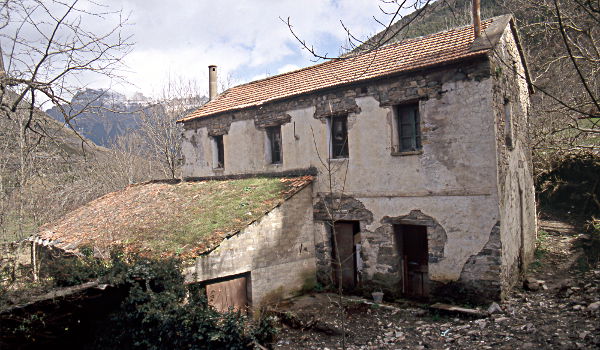
The rightmost door opens into a small reception hall. From there a staircase (visible in (2) behind the door right) leads to the upper floor. From the hall a door (2, right) leads to the workfloor.
The entrance left of the previous door, leads directly into the workplace.
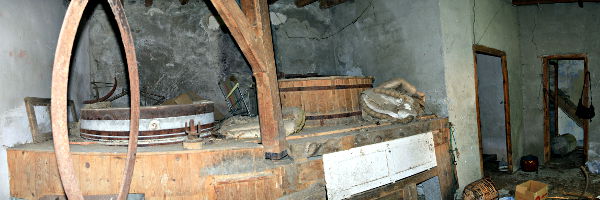
The table has space for two stone paires but only one set (2, left) is present. The associated stone case with part of the feeding system still attached (7) is visible at the right (2). The stone cover is a cilinder like in all mills we have seen in the basin of the Río Ara (e.g. Sarvisé, Fiscal, Jánovas, Cortillas). In other areas octogonal dust covers were prefered (on the southern slopes of the Sierra de Guara in e.g. Alquézar, Castillazuelo, Las Almunias de Rodellar)
The back of the stone carries several interesting features. Firstly we have three balance pits (circles in 3) evenly distributed around the circumference of the stone. They allow the miller to fine tune the balance of the stone in order to avoid any wobbling which could have disastrous consequences.
Next (3a, 4) comes the imprint of the manufacturer of the stone. It is the Grande Société Meulière Dupety Orsel et Cie, one of the important (associations of) companies of La Ferté-sous-Jouarre.
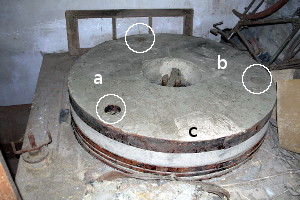
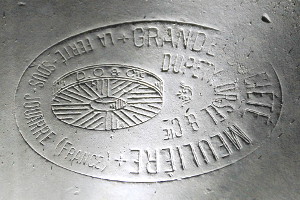


Especialidad en piedras de molino de las mas acreditadas canteras de La Ferté y La Dordoña(in red ink!)
The 3rd mark on the stone (3c, 6) is an ellips in bas relief. It says: . It is an indication of the superior quality of the stone.
piedras de exposicióncost about 15% more than stones
primera clase. I am in the dark about what precisely makes the difference.

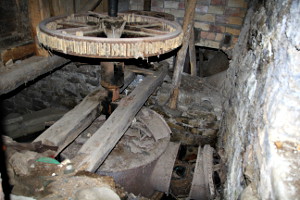

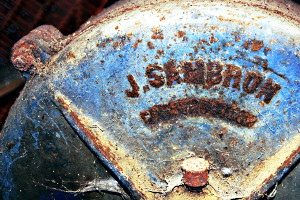
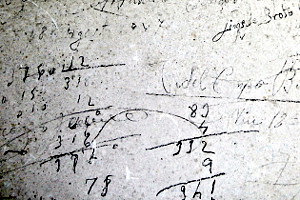
We recognize calculations: multiplications and (sometimes single digit) additions (11). There is one remarkable citation of a saying attributed to
the 18th century French writer (12). It is a translation of
Une belle femme est le paradis des yeux, l'enfer de l''âme et le purgatoire de la bourse.
Day December the 10th, 1953. We are here during the whole day, milling.or
Linas - Estoy moliendo - 20 Del ? - 1954 - José ???and also
Linas de Broto - 22 de agosto - estamos moliendo.
Many scribbles are short: the name of a person or a village, often with a date: e.g. Antonio Villacampa
oto a 27 de Abril 1948
; Angel Duaso Broto a 6 Setiembre de 1953
; Fragen á 30=10=53
; Carmen Villacampa Buisan
. The earliest entry we found was Día 12-1-40
and the most recent Linas de Broto dia 4-11-58
.
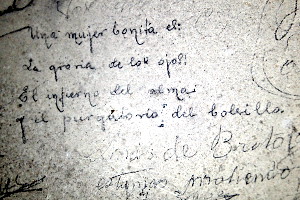
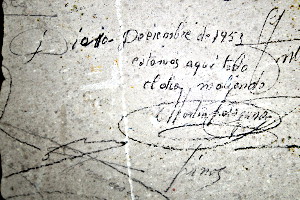
| waterworks | new powerstation | wheat mill | old powerstation | |
| mill stones | ||||